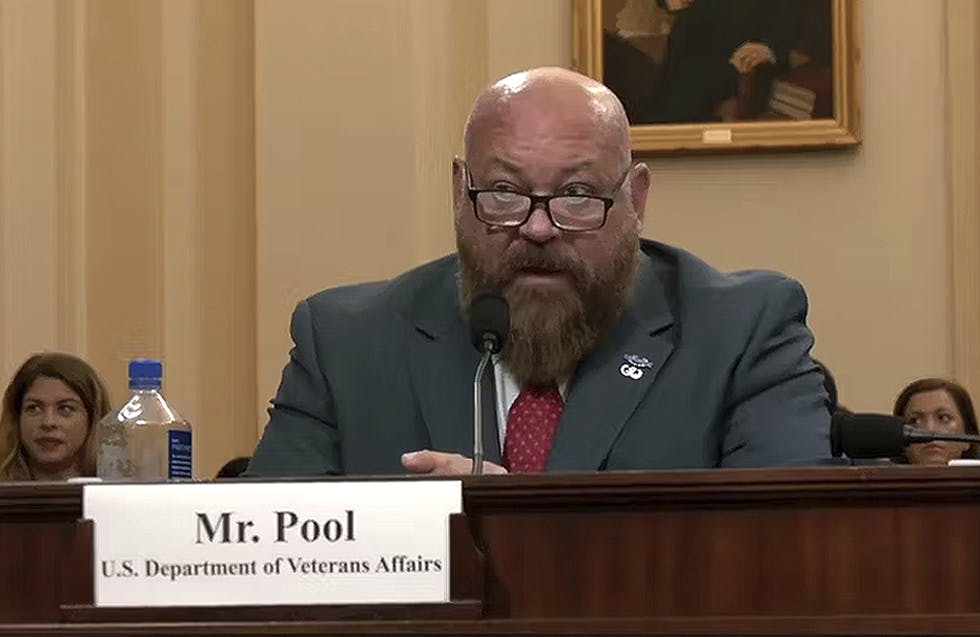How Federal IT Leaders Are Considering Effective AI Adoption
It’s critical to identify business use cases, sharpen data quality and governance, and work with end users to help improve AI adoption.

Federal agencies are increasingly looking to harness artificial intelligence within their core services. One of the major challenges toward adopting AI is successfully integrating it within core services, and advocates for automated technologies have put together key steps to help smooth the process.
Agencies are currently focusing a significant part of their AI adoption in low-value, administrative tasks so they can prioritize cognitive, creative and other high-value work across the federal workforce. Amid this sentiment, many AI advocates across government are identifying where AI can best fit business values and building initial efforts from there.
“It’s the tiny things that, at scale, make a ton a difference — making sure that a form gets to the right office, making sure that we’re able to track and capture what kind of questions we get asked most so that we can constantly update our FAQs in our chat bots with those answers,” GSA Centers of Excellence Federal AI Implementations Lead Anil Chaudhry said at a Digital Government Institute event Thursday.
But even with the business use cases in mind, Department of Health and Human Services AI Program Lead Sanja Basaric added that most AI projects tend to fail, largely due to bias in data, algorithms or the teams managing them. Basaric added that it is therefore critical to ensure that the data initially used in algorithms, as well as the governance that surrounds data, is shaped for successful AI adoption.
“Data is not information, and information is not insight, so when you understand where the data resides, who owns it, how to make it machine readable, how to standardize it, and then what are the data-sharing policies that govern it — if you look at a lot of the policies around data in the government, they were written before AI was even something we could fathom,” Basaric said.
Dynatrace Public Sector Chief Technologist Willie Hicks seconded these assertions, adding that preparing data for proper algorithmic application is essential. Without it, even the output of the most sophisticated and finely-tuned algorithms will remain faulty or biased.
“There’s an old adage, put bad data in, bad data out,” Hicks said. “If I’m analyzing bad data, I’m just going to get bad results, no matter how good my algorithms are. Then, I say start small. You can’t boil the ocean. Don’t start with some massive project. Start off with a small, easy-to-implement project, get to dip your toe in it, and then kind of move from there.”
Chaudry added that taking a “low-level building blocks” approach to starting projects around AI can also spot potential vulnerabilities or blind spots in advance. He said that most AI use cases in government right now are smaller projects that when scaled could significantly streamline and modernize an array of core business processes.
Basaric seconded these assertions while emphasizing the importance of education and training to get federal workers comfortable with using AI for lower-value work processes.
“This is going to require a major cultural shift across the entire government,” Basaric said. “We have to revisit enterprise data policies. We need strong foundations that consider the entire lifecycle and that define the business case before we even begin the AI, and a lot of this actually begins with training and education.”
Basaric touched upon the HHS Trustworthy AI Playbook, adding that if HHS and other agencies foster a culture that makes AI a “team sport,” this approach will make AI a transformational tool across across major business lines.
Since proving return on investment for different AI applications is another common challenge that agencies face, Basaric added that a culture shift and push for AI-forward education and training can help usher in further support for various aspects of AI development — from making data AI-ready to the development and maintenance of AI itself.
This is a carousel with manually rotating slides. Use Next and Previous buttons to navigate or jump to a slide with the slide dots
-

Opinion: Original Intelligence Is the Missing Piece for AI Transformation
Limitations of AI agents and development drive growing needs for workforce development and "original intelligence."
3m read -

VA CIO Targets Modern IT and Smarter Workforce Alignment
Agency leaders told lawmakers they are focused on trimming legacy systems and restructuring its workforce to streamline operations.
3m read -

Pentagon's $200M AI Contracts Signal Broader Effort to Transform Talent
The Army is leveraging Silicon Valley, reservist programs and new hiring strategies to integrate critical digital skills in its ranks.
5m read -

AI Foundations Driving Government Efficiency
Federal agencies are modernizing systems, managing risk and building trust to scale responsible AI and drive government efficiency.
43m watch -

Inside DOD’s Push to Grow the Cyber Workforce Through Academia
Diba Hadi gives her first interview since becoming principal director of the DOD’s Cyber Academic Engagement Office.
15m listen -

Agencies Tackle Infrastructure Challenges to Drive AI Adoption
Federal agencies are rethinking data strategies and IT modernization to drive mission impact and operational efficiency as new presidential directives guide next steps.
5m read Partner Content -

Generative AI Demands Federal Workforce Readiness, Officials Say
NASA and DOI outline new generative AI use cases and stress that successful AI adoption depends on strong change management.
6m read -

The Next AI Wave Requires Stronger Cyber Defenses, Data Management
IT officials warn of new vulnerabilities posed by AI as agencies continue to leverage the tech to boost operational efficiency.
5m read -

Federal CIOs Push for ROI-Focused Modernization to Advance Mission Goals
CIOs focus on return on investment, data governance and application modernization to drive mission outcomes as agencies adopt new tech tools.
4m read -

Fed Efficiency Drive Includes Code-Sharing Law, Metahumans
By reusing existing code instead of rewriting it, agencies could dramatically cut costs under the soon-to-be-enacted SHARE IT Act.
5m read -

Agencies Push Data-Driven Acquisition Reforms to Boost Efficiency
New initiatives aim to increase visibility of agency spending, improve data quality and create avenues to deploy solutions across government.
5m read -

Data Transparency Essential to Government Reform, Rep. Sessions Says
Co-Chair of the Congressional DOGE Caucus Rep. Pete Sessions calls for data sharing and partnerships to reduce waste and improve efficiency.
5m read
















